13 Best National Forests in the U.S. to Explore in 2025: A Traveler’s Guide
- March 26, 2024
- 0 comment
Explore the 13 Best National Forests in the U.S. for 2025. From Alaska’s vast wilderness to Florida’s springs, adventure and natural beauty await. America’s national forests are vast reserves of natural beauty, offering a mosaic of landscapes for explorers and nature lovers. From the serene to the spectacular, these forests serve as gateways to understanding the delicate balance between nature and human enjoyment.

As 2025 approaches, the allure of untouched wilderness calls out to those eager to discover the serenity of nature and the thrill of outdoor adventures. These forests are not just areas of natural beauty but are pivotal in conservation efforts, preserving biodiversity and ecosystems.
List of 13 Best National Forests in the U.S. to Explore
- Tongass National Forest
- White Mountain National Forest
- Pisgah National Forest
- Coconino National Forest
- Chugach National Forest
- Superior National Forest
- George Washington and Jefferson National Forests
- Gifford Pinchot National Forest
- Sierra National Forest
- Allegheny National Forest
- Deschutes National Forest
- Bridger-Teton National Forest
- Ocala National Forest
Selection Criteria
Our selection emphasizes forests that excel in four key areas: Accessibility, to ensure these natural wonders are reachable; the breadth of biodiversity, showcasing a rich variety of life; distinct geological and natural features, providing unique experiences; and the array of recreational opportunities available, guaranteeing memorable adventures. This careful selection process promises a list that truly represents the best the U.S. has to offer in natural exploration and enjoyment.
Here are our 13 Best National Forests in the U.S. to Explore
1. Tongass National Forest, Alaska
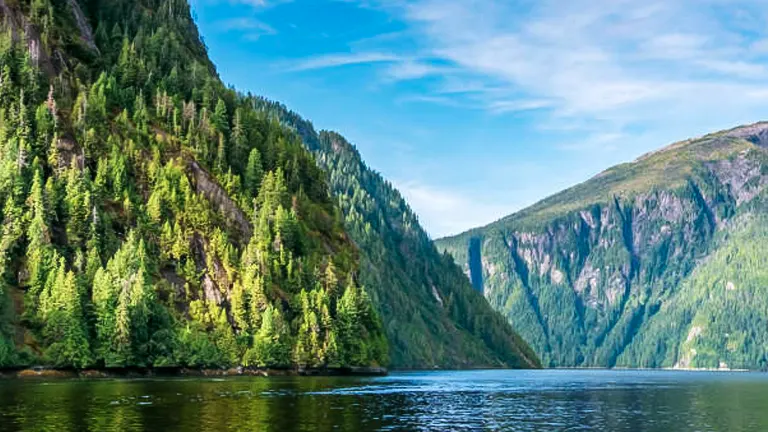
Spanning nearly 17 million acres, the Tongass National Forest is not only the largest national forest in the United States but also a crucial habitat for a myriad of wildlife. It encompasses the majority of Alaska’s Inside Passage and is home to a diverse range of ecosystems, including the rare temperate rainforest, extensive glaciers, and rugged coastlines. Key attractions include the Misty Fjords National Monument and the Admiralty Island National Monument, which is known as the “Fortress of the Bears,” offering unparalleled opportunities for wildlife viewing and photography. The Tongass is a vital area for conservation, supporting salmon fisheries that bolster both the local economy and the area’s diverse wildlife.
- Best Things to Do: Wildlife viewing in Admiralty Island, kayaking through Misty Fjords, hiking in the vast wilderness, and fishing in pristine waters.
- Best Time to Visit: May to September for milder weather and optimal wildlife viewing.
- How to Get There: Accessible by ferry and plane from Seattle or Juneau. Many visitors start their journey in Ketchikan or Juneau, where local charters and tours are available.
- Ecosystem Features: Dominated by Sitka spruce and western hemlock, the Tongass supports a wealth of wildlife, including brown bears, bald eagles, and humpback whales. Salmon streams are a crucial component of the ecosystem.
2. White Mountain National Forest, New Hampshire
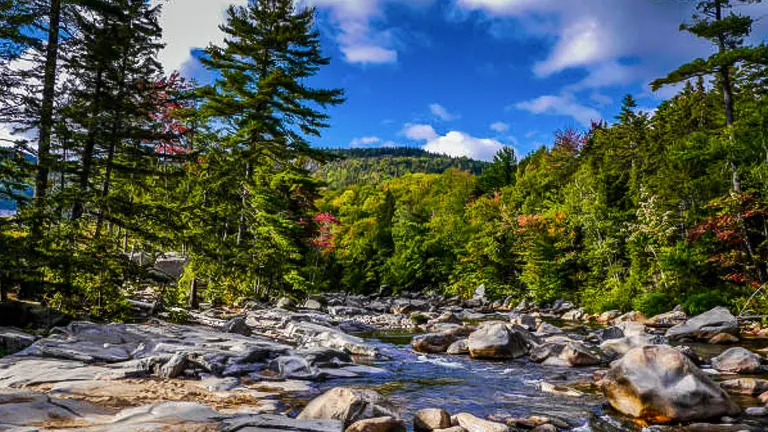
This eastern treasure covers more than 800,000 acres and is renowned for its scenic beauty across New Hampshire and Maine. The White Mountain National Forest offers an array of recreational activities with over 1,200 miles of non-motorized trails, making it a haven for hikers, bikers, and winter sports enthusiasts. The forest is famous for the Presidential Range and Mount Washington, the highest peak in the Northeastern United States, providing challenging hikes and stunning vistas. The Kancamagus Scenic Byway, running through the heart of the forest, offers one of the most beautiful autumn drives in the country, with vibrant fall colors creating a spectacular display.
- Best Things to Do: Hike the Presidential Range, drive the Kancamagus Scenic Byway, enjoy winter sports, and camp under the stars.
- Best Time to Visit: Autumn for the foliage, and winter for snow sports.
- How to Get There: Easily accessible from Boston; direct routes include NH Route 16 to Mount Washington.
- Ecosystem Features: Vibrant hardwood forests turn spectacular colors in fall. Home to moose, black bears, and diverse bird species.
3. Pisgah National Forest, North Carolina
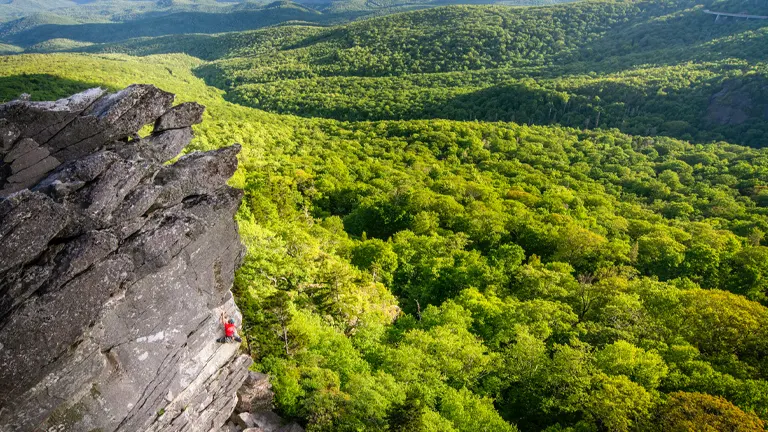
Covering over half a million acres, Pisgah National Forest is a landscape filled with mountainous terrain, cascading waterfalls, and miles of pristine woodland. Located in the Appalachian Mountains, it’s a historical landmark as one of the first national forests in the Eastern United States. Pisgah’s highlights include the iconic Looking Glass Rock, Sliding Rock, and the lush Cradle of Forestry. The Blue Ridge Parkway traverses this forest, offering breathtaking views and easy access to numerous hiking and biking trails. Pisgah is a sanctuary for outdoor enthusiasts looking to dive into biodiversity and engage in activities such as fishing, camping, and mountain biking.
- Best Things to Do: Explore Looking Glass Rock, visit Sliding Rock, hike extensive trails, and enjoy mountain biking.
- Best Time to Visit: Spring for wildflowers and waterfalls, autumn for foliage.
- How to Get There: Near Asheville, NC, via the Blue Ridge Parkway and other highways. Asheville Regional Airport is the nearest.
- Ecosystem Features: Rich with oak and hickory, higher elevations boast spruce-fir forests. Wildlife includes white-tailed deer and black bears.
4. Coconino National Forest, Arizona
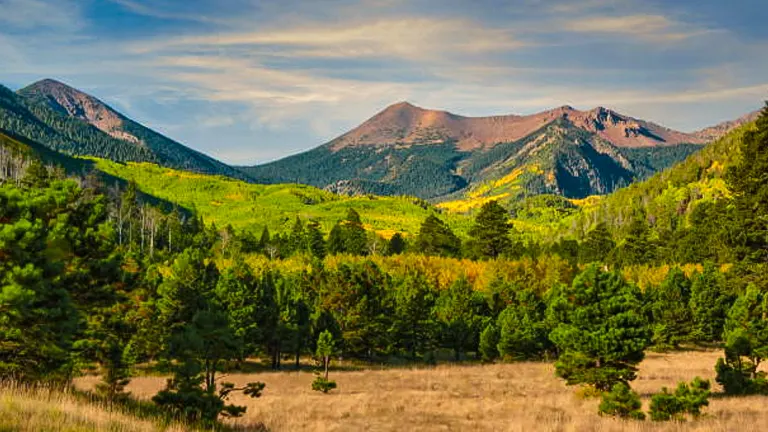
Diverse doesn’t fully capture the essence of Coconino National Forest. From the red cliffs of Sedona to the alpine tundra of the San Francisco Peaks, this forest presents landscapes that are as varied as they are breathtaking. The forest is a prime destination for those seeking both the serenity of nature and adventure, offering everything from backcountry skiing in the winter to hiking and mountain biking trails that weave through scenic vistas year-round. Sedona’s vortex sites, known for their energy fields, attract those interested in spiritual exploration, while the Lava River Cave offers a glimpse into the area’s volcanic activity. Coconino’s blend of natural beauty and recreational diversity makes it a unique destination for explorers of all kinds.
- Best Things to Do: Visit Sedona’s vortex sites, hike the San Francisco Peaks, explore the Lava River Cave.
- Best Time to Visit: March to May and September to November for mild weather.
- How to Get There: Drive from Phoenix to Sedona or from Flagstaff to San Francisco Peaks.
- Ecosystem Features: From red rock deserts to ponderosa pines and alpine tundra, hosting elk, Mexican spotted owls, and Gila monsters.
5. Chugach National Forest, Alaska
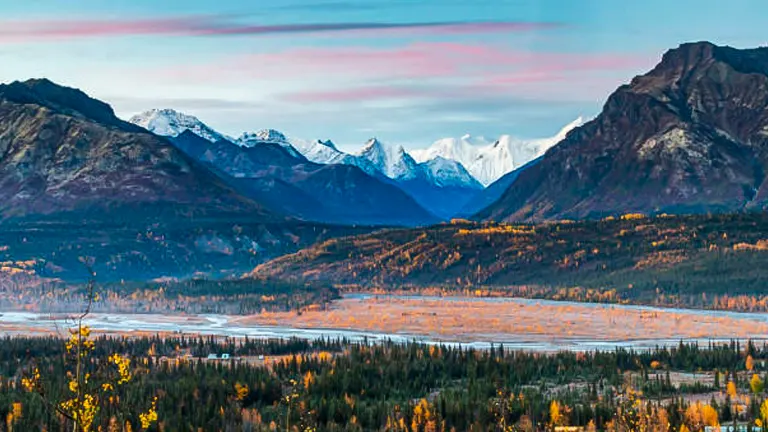
The Chugach National Forest, sprawling across Southcentral Alaska, is a marvel of glacial landscapes, dense rainforests, and rugged mountains. Covering over 5.4 million acres, it’s the second-largest national forest in the U.S. and offers some of the most accessible glacier viewing in Alaska. Notable features include the Prince William Sound, a pristine waterway dotted with islands and surrounded by glaciers, providing spectacular kayaking and wildlife viewing opportunities. The Kenai Peninsula, part of the Chugach, offers world-renowned fishing and hiking trails that lead to breathtaking views of the surrounding mountains and glaciers. The forest’s diverse ecosystems support a wide range of wildlife, from marine mammals to bald eagles and brown bears, making it a prime spot for nature enthusiasts.
- Best Things to Do: Glacier viewing, kayaking in Prince William Sound, fishing and hiking on the Kenai Peninsula.
- Best Time to Visit: June to August for mild weather and accessible trails.
- How to Get There: Accessible from Anchorage or via the Seward Highway, offering stunning scenic drives.
- Ecosystem Features: Glaciers, dense rainforests, and rugged mountains, home to marine mammals, bald eagles, and brown bears.
6. Superior National Forest, Minnesota
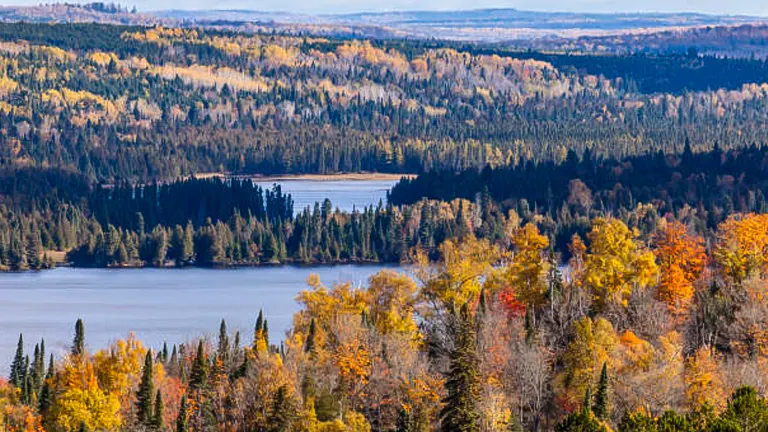
Nestled in the heart of the American Midwest, Superior National Forest encompasses over 3 million acres, including the Boundary Waters Canoe Area Wilderness (BWCAW). This forest is a mosaic of crystal-clear lakes, streams, and dense woodlands, offering over 1,500 miles of canoe routes and hundreds of miles of hiking trails. The BWCAW is a unique wilderness area where motorized vehicles are restricted, allowing visitors to experience the serenity of nature undisturbed. Winter transforms the landscape into a snowy wonderland, ideal for cross-country skiing and snowmobiling. The forest’s diverse habitats are home to wolves, moose, and the elusive lynx, providing ample wildlife viewing opportunities.
- Best Things to Do: Canoeing in BWCAW, hiking, cross-country skiing, and snowmobiling.
- Best Time to Visit: Summer for canoeing and winter for snow activities.
- How to Get There: Drive from Duluth, MN, offers the most direct route into the forest.
- Ecosystem Features: Lakes, streams, and dense woodlands, inhabited by wolves, moose, and lynx.
7. George Washington and Jefferson National Forests, Virginia

Spanning across the Appalachian Mountains of Virginia and into parts of West Virginia and Kentucky, the George Washington and Jefferson National Forests cover over 1.8 million acres. These forests are a haven for outdoor recreation, with over 2,000 miles of trails, including a portion of the Appalachian Trail, offering endless hiking, biking, and horseback riding adventures. The forests are known for their spectacular display of autumn foliage, attracting photographers and nature lovers each year. Key attractions include the Mount Rogers National Recreation Area, home to the highest point in Virginia, and the stunning Grayson Highlands State Park, where wild ponies roam freely. The area’s rich history and cultural heritage add depth to the visitor experience, making it a must-visit destination for those exploring the East Coast.
- Best Things to Do: Hike the Appalachian Trail, explore Mount Rogers and Grayson Highlands State Park.
- Best Time to Visit: Fall for the foliage, spring and summer for hiking.
- How to Get There: Accessible via I-81 and other routes through the Appalachian Mountains.
- Ecosystem Features: Rich Appalachian biodiversity, with trails through lush forests home to a variety of wildlife, including wild ponies.
8. Gifford Pinchot National Forest, Washington

Covering a significant portion of the Cascade Range, the Gifford Pinchot National Forest is a landscape of immense beauty and geological diversity. This forest is home to the Mount St. Helens National Volcanic Monument, where visitors can learn about the area’s volcanic history and witness the ecosystem’s recovery after the 1980 eruption. The forest boasts over 1,300 miles of trails, catering to hikers, mountain bikers, and horseback riders, winding through lush old-growth forests, alpine meadows, and along scenic rivers. The Pacific Crest Trail passes through the forest, offering long-distance hikers breathtaking views and challenging terrain. Gifford Pinchot’s diverse ecosystems support an abundance of wildlife, including elk, mountain goats, and the northern spotted owl, making it a wildlife watcher’s paradise.
- Best Things to Do: Explore Mount St. Helens, hike the Pacific Crest Trail, enjoy old-growth forest walks.
- Best Time to Visit: Summer and early fall for hiking, spring for wildflowers.
- How to Get There: Located between Mount Rainier National Park and the Columbia River Gorge, accessible from Portland, OR, and Seattle, WA.
- Ecosystem Features: Diverse landscapes from volcanic monuments to old-growth forests, supporting elk, mountain goats, and spotted owls.
9. Sierra National Forest, California
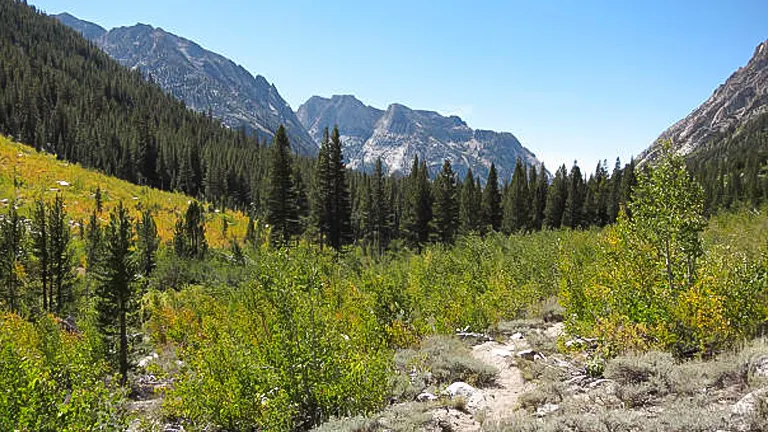
Adjacent to Yosemite National Park, the Sierra National Forest offers a less crowded alternative to its famous neighbor, with equally stunning scenery. Spanning over 1.3 million acres, the forest is a landscape of rugged mountains, clear lakes, and vast meadows. Highlights include the majestic giant sequoias in the Nelder Grove and the breathtaking views from the John Muir Wilderness. The forest is a hub for outdoor activities, with trails for hiking, mountain biking, and horseback riding, as well as lakes and rivers for fishing and boating. The Ansel Adams Wilderness, within the forest, offers some of the most iconic landscapes in the Sierra Nevada, providing endless inspiration for photographers and nature lovers alike.
- Best Things to Do: Hiking in the John Muir Wilderness, visiting giant sequoias in Nelder Grove, fishing and boating in high mountain lakes.
- Best Time to Visit: Late spring through early fall for hiking and camping; winter for snow sports.
- How to Get There: East of Fresno, CA; accessible via highways and roads leading out of Fresno into the forest.
- Ecosystem Features: Home to giant sequoias, rugged mountains, and alpine lakes, supporting a wide range of wildlife including black bears, mule deer, and mountain lions.
10. Allegheny National Forest, Pennsylvania
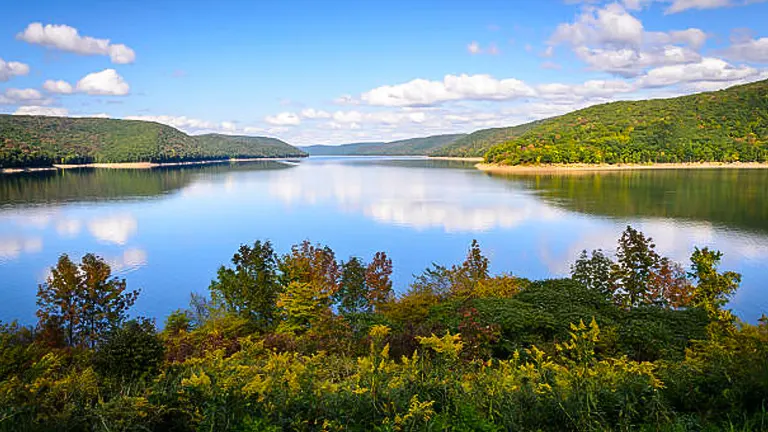
Nestled in the heart of Pennsylvania, Allegheny National Forest spans over 500,000 acres, offering a mix of lush forested valleys, clear streams, and rolling hills. It’s known for the Kinzua Sky Walk, an engineering marvel that provides stunning views of the surrounding landscape. The forest’s extensive trail system caters to hikers, mountain bikers, and snowmobilers, making it a year-round destination for outdoor enthusiasts. Fishing and boating are popular on the Allegheny Reservoir, a highlight for water lovers.
- Best Things to Do: Walk the Kinzua Sky Walk, hike and bike the extensive trails, fish and boat on the Allegheny Reservoir.
- Best Time to Visit: Summer for water activities and hiking; fall for the foliage; winter for snowmobiling.
- How to Get There: Located in northwest Pennsylvania, accessible via Route 6 and other state highways.
- Ecosystem Features: Lush deciduous forests, home to white-tailed deer, wild turkey, and a variety of freshwater fish in its streams and reservoir.
11. Deschutes National Forest, Oregon
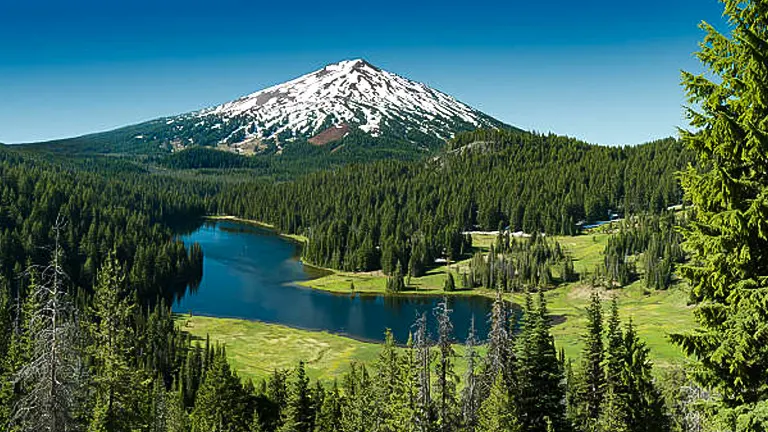
Deschutes encompasses a diverse landscape of forests, mountains, and lakes in the heart of Oregon. The forest is a haven for outdoor recreation, offering everything from world-class mountain biking on the McKenzie River Trail to skiing at Mount Bachelor. The Newberry National Volcanic Monument within the forest features fascinating geological formations, including lava flows, cinder cones, and the expansive Newberry Caldera. The clear, cold waters of the Deschutes River are renowned for fly fishing and whitewater rafting, drawing visitors seeking both tranquility and adventure.
- Best Things to Do: Mountain biking on the McKenzie River Trail, skiing at Mount Bachelor, exploring the Newberry National Volcanic Monument.
- Best Time to Visit: Summer for hiking and biking; winter for skiing and snowboarding.
- How to Get There: Central Oregon, around Bend and Sisters; accessible via US Highway 97.
- Ecosystem Features: Mixed conifer forests, volcanic landscapes, and clear rivers, providing habitat for bald eagles, osprey, and elk.
12. Bridger-Teton National Forest, Wyoming
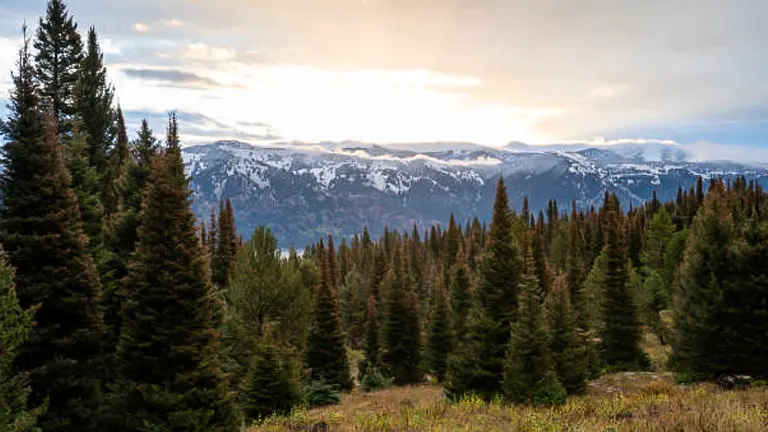
Bridger-Teton offers more than 3.4 million acres of Western wilderness at its best, with vast meadows, towering mountain peaks, and pristine rivers and lakes. It borders the Grand Teton National Park, enhancing its wildlife viewing opportunities, with chances to see elk, moose, and grizzly bears in their natural habitats. The forest includes parts of the Teton Wilderness and the Wind River Range, both offering extensive trails for backpacking and horseback riding, appealing to those seeking solitude and untouched natural beauty.
- Best Things to Do: Wildlife viewing near Grand Teton, backpacking in the Teton Wilderness, fishing and boating on mountain lakes.
- Best Time to Visit: Summer for hiking and camping; winter for skiing and snowshoeing.
- How to Get There: North and east of Jackson, WY; accessible via highways 89 and 191.
- Ecosystem Features: Vast wilderness areas with mountain ranges, meadows, and rivers, supporting grizzly bears, wolves, and moose.
13. Ocala National Forest, Florida
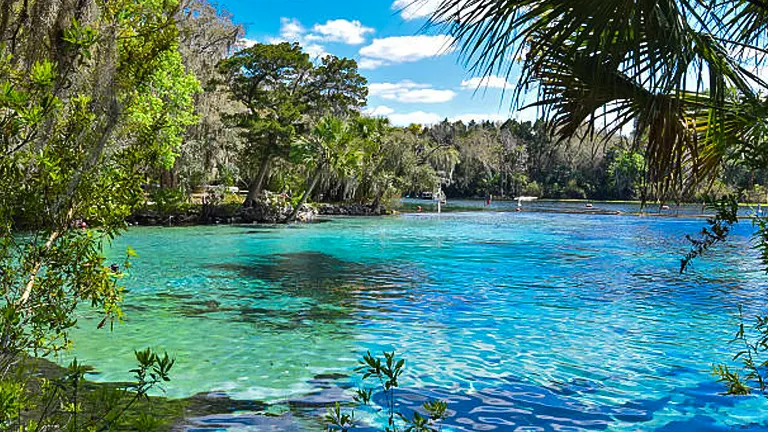
As the southernmost forest in the continental U.S., Ocala stands out with its unique ecosystem of sand pine scrub and springs. It offers a refreshing departure from the typical forest landscape, featuring over 600 lakes and rivers for fishing and boating. The forest is famous for its crystal-clear springs, such as Juniper Springs and Silver Glen Springs, ideal for snorkeling and swimming. The Florida National Scenic Trail passes through Ocala, providing hikers with a unique opportunity to explore the diverse flora and fauna of the region.
- Best Things to Do: Snorkeling in crystal-clear springs, hiking the Florida National Scenic Trail, fishing and boating on the lakes.
- Best Time to Visit: Fall through spring to avoid the summer heat and enjoy cooler temperatures.
- How to Get There: North of Orlando, accessible via State Road 40 and other local roads.
- Ecosystem Features: Unique sand pine scrub and hundreds of springs, hosting diverse wildlife such as black bears, alligators, and numerous bird species.
Planning Your Visit
When planning a visit to any of these national forests, consider the season and local climate to enhance your experience. Each forest has its peak times for specific activities, whether it’s fall foliage viewing, summer camping, or winter sports. Always check for any required permits or regulations, especially for activities like backcountry camping or fishing. Embracing Leave No Trace principles during your visit helps preserve these natural spaces for future generations.
Conclusion
Exploring these national forests in 2025 offers a chance to immerse yourself in the natural beauty and diversity of the U.S. landscape. From the serene springs of Florida to the rugged wilderness of Wyoming, each forest presents a unique adventure. By choosing responsible exploration and adhering to conservation efforts, we can ensure these treasures remain vibrant and accessible for years to come.
FAQs
- What unique climates can be experienced across these national forests?
Each forest encompasses distinct climate zones, ranging from Alaska’s cold temperate rainforests to the subtropical climes of Florida’s Ocala National Forest, offering varied experiences to visitors. - Are there opportunities to volunteer in these national forests?
Yes, many forests have volunteer programs for conservation, trail upkeep, and educational programs. It’s a hands-on way to contribute to the preservation of these natural spaces. - What should I know about wildlife safety in these areas?
Maintain a safe distance from wildlife, store food properly, and familiarize yourself with the behavior of local species. Always follow the safety guidelines provided by the forest service. - How can visitors reduce their environmental impact in these forests?
Adhering to Leave No Trace principles, such as proper disposal of waste, staying on marked trails, and respecting wildlife, helps in conserving these environments. - What lesser-known activities can be done in these national forests?
Look for stargazing, guided nature walks, wildflower tours, birdwatching, and exploring historical sites, which are often available in these forests. - Are the national forests accessible for those with mobility impairments?
Many forests feature trails, campsites, and facilities designed for accessibility. Check with the specific forest’s visitor center for the most accurate information. - Can I engage in citizen science during my forest visit?
Some forests invite visitors to engage in citizen science projects, which might include bird counts, flora monitoring, and participation in wildlife research efforts. - Is there a best time of year to visit these forests for fewer crowds?
Visiting during shoulder seasons, typically in late spring or early fall, can offer a more solitary experience. However, the best time can vary by location, so it’s wise to check with each forest.
As we’ve journeyed through the splendor of the 13 Best National Forests to explore in 2025, remember that each forest holds its own secrets and delights. Venture out and immerse yourself in the natural beauty these treasured landscapes offer. Adventure is calling.
Explore our dedicated section on national forests and state parks to uncover hidden gems and outdoor wonders. Discover top recommendations in our best section, and delve into in-depth product reviews in our review section.

Benjamin Brooks
Forestry AuthorGreetings! I'm Benjamin Brooks, and my journey over the past 15 years has revolved around the fascinating realms of content creation, expertise in snow clearing, and the intricate world of lumberjacking and landscaping. What began as a simple curiosity about the natural world and heavy machinery has evolved into a passionate profession where my love for crafting words intertwines seamlessly with my lumberjacking and garden skills.













Leave your comment